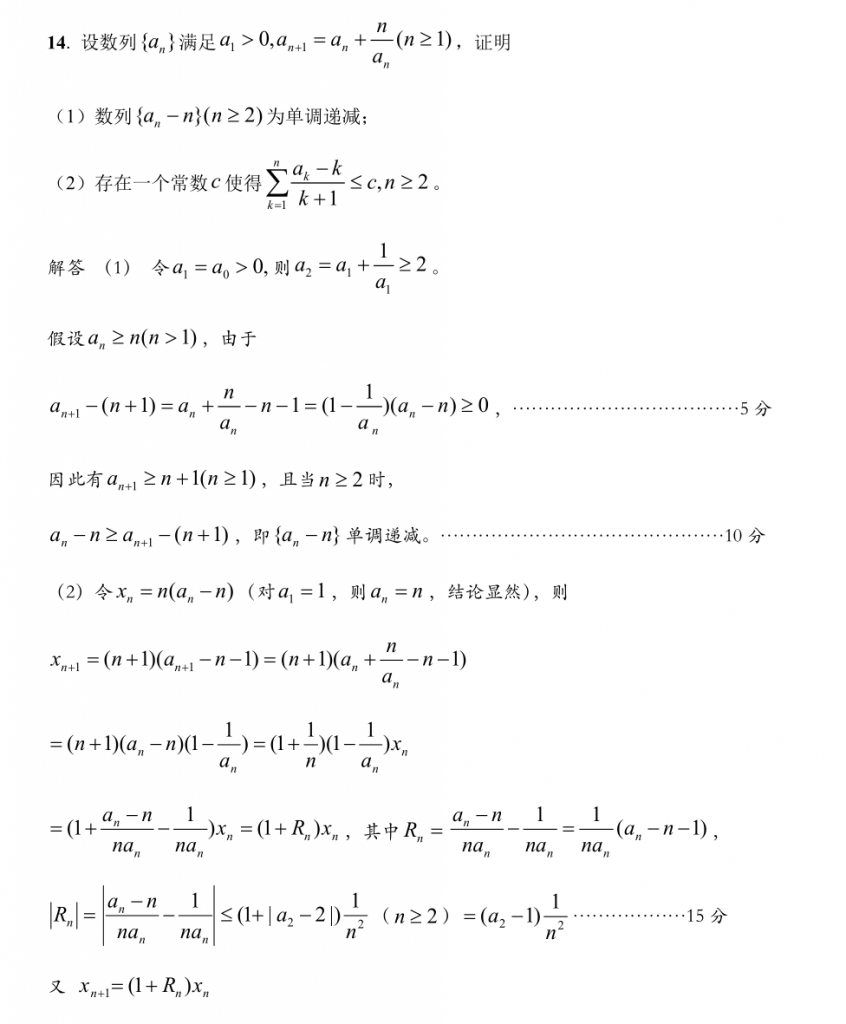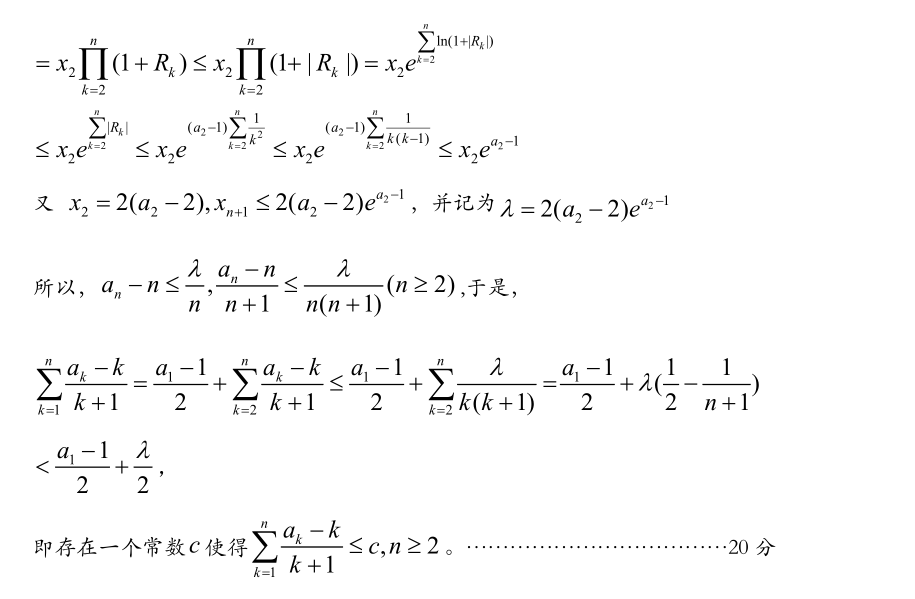
对于$\max$函数,我们常用的是\[\max(a,b) \ge a,\max(a,b) \ge b\]
而实际上我们还可以使用它的加权形式:\[\forall t \in [0,1],\max(a,b) \ge ta+(1-t)b\]
1.$a,b>0$,求$\ds h=\max(a,\frac{1}{b})+\max(b,\frac{2}{a})$的最小值
引入参数$x,y \in [0,1]$
\[h \ge xa+(1-x)\frac{1}{b}+y\frac{2}{a}+(1-y)b \ge 2\sqrt{2xy}+2\sqrt{(1-x)(1-y)}=f(x,y)\]
由于此式是恒成立,所以\[h \ge \max f(x,y)\]
而\[f(x,y)=2(\sqrt{2x}\sqrt{y}+\sqrt{1-x}\sqrt{1-y}) \le 2\sqrt{2x+1-x}\sqrt{y+1-y}=2\sqrt{x+1} \le 2\sqrt{2}\]
且于$x=1,y=1$取等
故可得$h \ge 2\sqrt{2}$.且根据取等的$x,y$可以写出\[h \ge a+\frac{2}{a} \ge 2\sqrt{2}\]
2.$a,b,c>0$,求$\ds h=\max(a,\frac{1}{b})+\max(b,\frac{2}{c})+\max(c,\frac{3}{a})$的最小值
同理,我们引入$x,y,z \in [0,1]
$\begin{gather*}h \ge xa+(1-x)\frac{1}{b}+yb+(1-y)\frac{2}{c}+zc+(1-z)\frac{3}{a}\\\ge 2\sqrt{3(1-z)x}+2\sqrt{(1-x)y}+2\sqrt{2(1-y)z}=f\\\frac{f}{2}=\sqrt{3x}\sqrt{1-z}+\sqrt{2(1-y)}\sqrt{z}+\sqrt{(1-x)y}\\\le \sqrt{3x+2(1-y)}\sqrt{1-z+z}+\sqrt{(1-x)y}\\=\sqrt{x+\frac{2(1-y)}{3}}\sqrt{3}+\sqrt{1-x}\sqrt{y}\\\le \sqrt{1+\frac{2(1-y)}{3}}\sqrt{3+y}=\sqrt{\frac{1}{3}(15-y-2y^2)} \le \sqrt{5}\\f \le 2\sqrt{5}\end{gather*}
取等时\[y=0,x=1,z=\frac{2}{5}\]
知道取等以后就可以用下面这种看起来很厉害的办法写过程了
\begin{gather*}h=\max(a,\frac{1}{b})+\max(b,\frac{2}{c})+\max(c,\frac{3}{a})\\\ge a+\frac{2}{c}+(\frac{2}{5}c+\frac{3}{5}\frac{3}{a})=a+\frac{9}{5a}+\frac{2}{c}+\frac{2c}{5}\\\ge 2\sqrt{\frac{9}5}+2\sqrt{\frac{4}{5}}=2\sqrt{5}\end{gather*}
只需要举出一例保证可以取到即可
很明显,如果最后关于$y$的二次函数取最值不在端点,整个式子就会更加复杂.按照这种思路,就可以自己命制新的问题了
3.$a,b,c>0$,求$\ds h=\max(a,\frac{4}{b})+\max(b,\frac{2}{c})+\max(c,\frac{3}{a})$的最小值
\begin{gather*}h=\max(a,\frac{4}{b})+\max(b,\frac{2}{c})+\max(c,\frac{3}{a})\\\ge \frac{5}{12}a+\frac{7}{12}\frac{4}{b}+\frac{7}{8}b+\frac{1}{8}\frac{2}{c}+\frac{1}{6}c+\frac{5}{6}\frac{3}{a}\\=5(\frac{a}{12}+\frac{1}{2a})+7(\frac{b}{8}+\frac{1}{3b})+(\frac{c}{6}+\frac{1}{4c})\\\ge 10\sqrt{\frac{1}{24}}+14\sqrt{\frac{1}{24}}+2\sqrt{\frac{1}{24}}=\frac{13\sqrt{6}}{6}\end{gather*}
当且仅当$\ds a=\sqrt{6},b=\frac{2\sqrt{6}}{3},c=\frac{\sqrt{6}}{2}$取等
其实就是三个$\max$里面的东西同时相等\[a=\frac{4}{b},b=\frac{2}{c},c=\frac{3}{a}\]
而后再根据这个取等凑系数.这句话很重要,不再举例.




